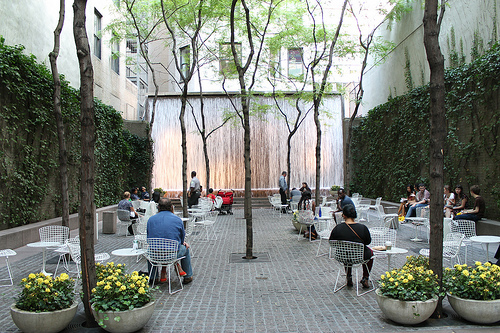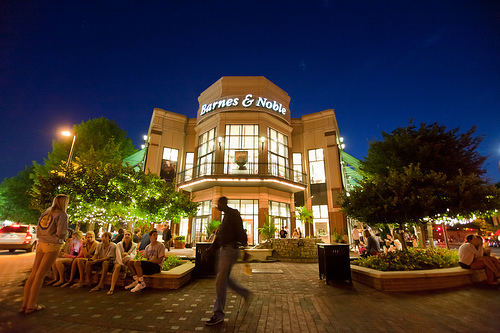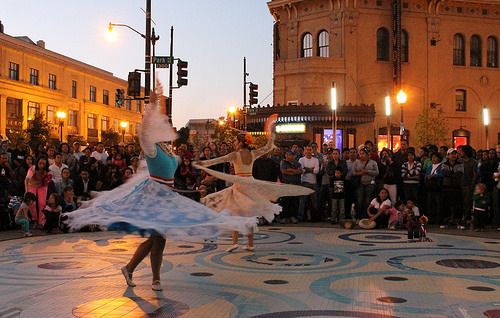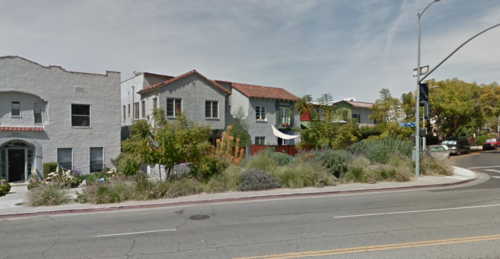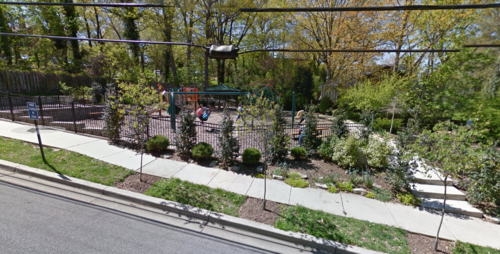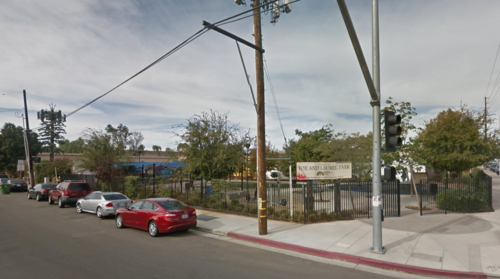10 small parks and plazas that prove tiny is terrific

An urban plaza in New York City by Mike Boucher licensed under Creative Commons.
This article was first published on April 11, 2016. As we continue to talk about public spaces, we wanted to share this article with you again.
Georgetown Day School recently downsized its plans for a mixed-use project in Tenleytown. Aside from cutting 50 units of housing, the developers also canceled plans for a pocket park. We called that a loss, but some skeptics said it wasn’t a big deal because the park would have been very small. But when it comes to parks, quality is way more important than size. These 10 “teacup parks” show that.
In its original proposal, GDS offered to close a slip lane between Wisconsin Avenue and 42nd Street and create a pocket park of roughly 7400 square feet. The school offered a few designs, including a splash pad, a skatepark, and a demonstration garden. With the reduction in size, GDS will still close the slip lane for safety reasons, but it will just be another grass triangle.
Opponents of the GDS deal claimed that this small park was just too small, unlike what’s typical in Ward 3. Fort Reno, for example, is 33 acres, or 1.5 million square feet.
But little parks can be everything for building engaging streets, something Tenleytown does not have. Here are 10 great park and plazas less than 15,000 square feet that make their neighborhoods a lot better.
1. Paley Park, New York City
If you ask a planner for an example of a pocket park, they’ll probably bring up Paley Park. At 4200 square feet, it’s smaller than the Ellicott Park would have been. But a water feature, movable seating, and a few delicate trees create a beloved retreat in one of the busiest, loudest parts of Manhattan.
2. Bethesda Row Fountain
Because of the lively nearby streets, this tiny triangle of land in Bethesda has been swamped since it opened in 2000, despite being a mere 1500 square feet.
3. Columbia Heights Civic Plaza
Designed by ZGF Architects, buildings frame this 12,000 square foot plaza, which is just as lively hosting public events or a farmers market as it is demonstrations or a children’s splash park.
4. Parkman Triangle, Los Angeles
Residents turned a leftover sliver of concrete in Silver Lake into this 2000 square foot parklet, where desert plants shield seating from traffic.
5. Boyd-Jackson Park, Takoma Park
A small neighborhood park, this fits play structures and a field into less than 8,000 square feet. It’s hardly the National Mall, but it’s still incredibly useful and convenient for its neighborhood.
6. Fowler Square, Brooklyn, New York
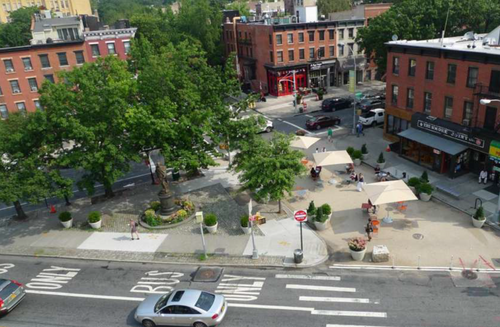
Fowler Square’s temporary configuration. Image Courtesy NYC DOT.
New York’s Department of Transportation connected a little island by transferring a single block from cars to pedestrians to create an 8,400 square foot plaza. Although drivers originally opposed it, it has become the highest-rated of New York’s plazas and enough of a neighborhood amenity to make the change permanent.
POPS Skatepark, Philadelphia
One corner of a neighborhood park, this skate park’s small, 6,000 square foot size works well for inexperienced, younger skateboarders.
8. Fox and Laurel Park and Community Garden, Los Angeles
In a space just twice the Ellicot Park lot (15,000), surrounded by a storage facility, the city fit two playgrounds, native plantings, and a community garden.
9. This private park at Brown University
This quiet space between academic buildings and houses takes up 5,500 square feet but manages to pack in a secluded urban room.
10. Unnamed Triangle (Reservation 265)
Some residents took a play set out to one of DC’s many leftover grass triangles. It’s not pretty, and probably not legal, but it’s a lot more use than most of them get.
Small can still be great
Whether or not Ellicott Street gets a park, there many neighborhoods in DC that would benefit from a few pocket parks. Meanwhile, Tenleytown is trying to revamp its public spaces through the Main Street program. These examples show that it’s foolish to get hung up on the size of a discrete strip of land. With busy nearby streets and good design, you can squeeze a lot of life into a modest space.
Of course, this is just what I could come up with from memory and asking a few people. There are tons of great public spaces of this size. Can you think of any that caught your eye?

